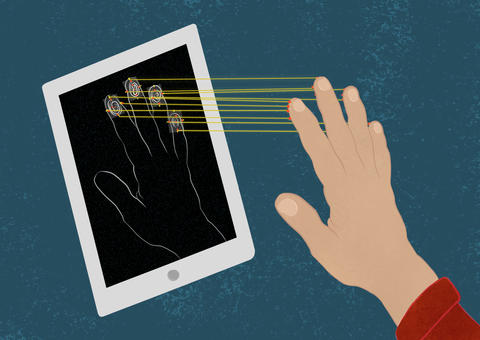
Fingerprints are a great means for proving you are (or are not) who you say you are, and we’ve spent the past 2,200 years making progressively greater use of them. Nowadays, we can use digital technology to collect fingerprints for tasks like getting into your phone or home, or as evidence during crime investigations. But for all the technology advances through the years, collecting fingerprints still requires touching something.
Digital technology can collect fingerprints with distinct features as small as 0.002 inches (0.051mm) using touch-based collection devices, but they can be cumbersome and possibly spread germs.
Well ... we’re now at the cusp of a revolution in technology that may solve this long-standing dilemma and make fingerprinting less of a touchy subject, literally.
NIST has been actively researching an emerging generation of devices that can collect fingerprints without physical contact. Capturing fingerprints — and their tiny features — without contact from a foot (30.5cm) away is like trying to take a picture of a tennis ball on the ground next to the Empire State Building when you’re standing on its roof, roughly 1,250 feet (381m) up. But this new technology promises to zoom in with that level of precision.
To make sure the contactless fingerprints are good enough for their intended purpose, fine features on the fingerprint need to be collected accurately every time. For example, a 0.04” feature on the finger needs to be 0.04” when collected, not 0.05”.
Consistent and accurate collection of these small features is important for making good use of fingerprints, because a bad print collection job results in a bad representation of the finger’s print pattern — potentially reducing the accuracy of systems that match digital prints. Making sure a collected print effectively represents its finger is a measurement problem, and that’s where NIST comes in.
Will print-matching systems work as well with contactless fingerprints as they did with traditional fingerprints? Will contactless fingerprints slow down print-matching systems? What happens when you mix and match the new and the old types of fingerprints on a matcher?
NIST measured all of those things in the latest paper from a series of studies on the subject. Read about the findings.
Follow us on social media for more like this from all across NIST!

